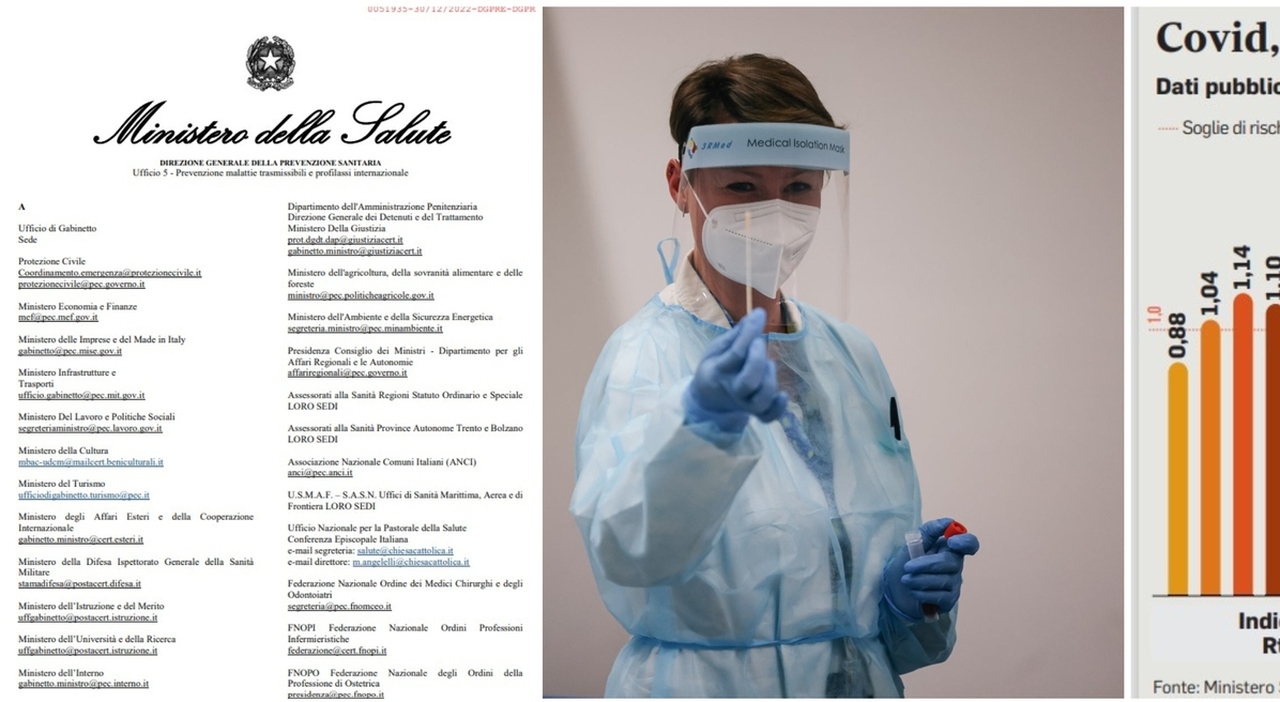It’s getting better, but we prepare for the worst. It is from this point of view that the new circular «Interventions in place for the management of the circulation of Sars-CoV-2 in the 2022-2023 winter season», signed by the director of Prevention of the Ministry of Health, Gianni Rezza, and by the director of Programming Stefano Lorusso. The document plans possible countermeasures, should the epidemiological picture worsen which, at the moment, is instead slightly improving, at least according to the latest monitoring. So much so that, curbing the urgency of new restrictions, even the Minister of Health Orazio Schillaci yesterday went back to underlining how «It is no longer the era of obligations. I believe that in a mature state like ours, citizens will responsibly get vaccinated ». Returning to the circular, the text reads: «Although the evolution of the pandemic is currently unpredictable, our country must prepare itself to face a winter in which an increased welfare impact could be observed attributable to various acute respiratory diseases, first of all the flu, and the possible circulation of new variants of Sars-CoV2, also determined by individual behavior and the immune status of the population”. In anticipation of a negative scenario, the circular hypothesizes a return to indoor masks and smart working. “The use of masks – reads the circular – is effective in reducing the transmission of respiratory viruses and in the event that an evident epidemiological deterioration is documented with serious clinical impact and on the functioning of welfare services, their use could be indicated in enclosed spaces, aimed in particular at protecting people at high risk of serious illness”.
Lo smart working
Similarly, the circular indicates that, in the event of a possible significant worsening of the epidemiological picture, “the temporary adoption of other measures can be evaluated, such as working from home or limiting the size of events involving gatherings”. Among the other actions indicated are: the reduction of mass aggregations, the ventilation of closed environments and the intensification of the fourth doses of the vaccine. In this preparatory phase, the circular deems it “essential for the regional health services to verify and, if necessary, strengthen the state of preparation in order to deal with a possible increase in the demand for assistance for SarsCoV2 cases”. In particular, the document recommends the verification of hospitalization and intensive care beds; the procurement of devices, drugs, vaccines; the availability of trained healthcare personnel who “can support local departments and services in the event of an increase in cases such as to exceed the current capacity of the healthcare systems”. The circular should be considered more as a “due act” against the errors of poor preparation of the past. At the moment, in fact, there are no signs of a worsening of the epidemiological situation in Italy.
THE CIRCULAR
The bulletin
On the contrary, the latest update continues to show a drop in the incidence and in the transmissibility index Rt. The weekly incidence at national level is in fact equal this week to 207 cases per 100,000 inhabitants against 233 per 100,000 inhabitants seven days ago . In the week from 7 to 20 December, the average Rt calculated on symptomatic cases was instead equal to 0.84 (range 0.81-0.88), a decrease compared to the previous week and below the epidemic threshold. The ICU occupancy rate is essentially stable at 3.2%. The employment rate in medical areas nationwide drops to 13% from 13.7% as of Dec. 22. The cases of Covid and the deaths in Italy are decreasing: in the week of 23-29 December there were 122,110 new positive cases with a variation of -11.3% compared to the previous week. There were 706 deceased with a variation of -11.5% compared to the previous week (798).
The situation therefore seems under control, but things could change suddenly, for example due to a new variant that can arrive from China. «So far we are absolutely calm – reports Schillaci – because all the cases sampled» from the flights arriving from China to Italy «demonstrate that there are all variants of Omicron already present in our country. In the first flights that arrived at Malpensa, 1 passenger out of 2 was positive, while at Fiumicino the percentage dropped between 10-20%. So much less.” According to the monthly bulletin on the ISS variants, almost all of the Covid cases in Italy are due to the Omicron variant, which makes up 99.95% of the deposited sequencing. The remaining 0.05% can be attributed to Delta/Omicron recombinants. The most popular Omicron subvariant in the last 6 weeks is Cerberus, followed by BF.7.
© breaking latest news
